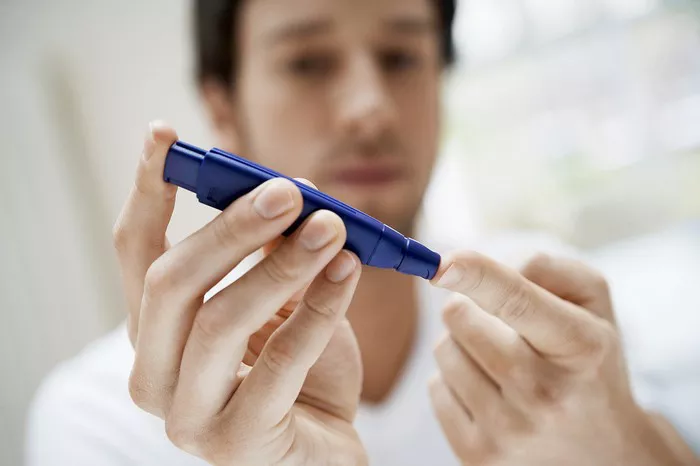Diabetes is a chronic condition characterized by high levels of glucose in the blood, resulting from the body’s inability to produce or effectively use insulin. Type 1 diabetes, often diagnosed in childhood or adolescence, requires careful management of blood sugar levels through insulin therapy, diet, and lifestyle modifications. One often overlooked aspect of diabetes management is skin care. Diabetic lotion is specially formulated to address the unique skin care needs of individuals with diabetes, providing benefits that go beyond those of regular lotions. This article delves into what makes diabetic lotion different, its benefits, and why it is essential for people with diabetes.
The Importance of Skin Care in Diabetes Management
People with diabetes are prone to a variety of skin problems, including dry skin, infections, and slow wound healing. These issues can arise due to several factors related to diabetes:
- Poor Circulation: High blood sugar levels can damage blood vessels, leading to reduced blood flow, especially in the extremities. This poor circulation can result in dry, cracked skin and slower healing of wounds.
- Nerve Damage (Neuropathy): Diabetic neuropathy can decrease sensation in the skin, making individuals less aware of injuries or infections. This can lead to untreated wounds becoming serious complications.
- High Blood Sugar Levels: Elevated glucose levels can lead to dehydration and dry skin. Moreover, high sugar levels in the blood provide a conducive environment for bacterial and fungal infections.
- Immune System Impairment: Diabetes can weaken the immune system, making it harder for the body to fight off infections and heal wounds effectively.
Given these challenges, it is crucial for individuals with diabetes to take extra care of their skin. This is where diabetic lotion comes into play.
What Makes Diabetic Lotion Different?
Diabetic lotions are formulated to meet the specific needs of diabetic skin. Here are the key differences and features that set them apart from regular lotions:
Hydration
Dry skin is a common problem for people with diabetes, which can lead to itching, cracking, and increased susceptibility to infections. Diabetic lotions typically contain higher concentrations of moisturizing agents such as glycerin, urea, and ceramides. These ingredients help to retain moisture in the skin, keeping it hydrated for longer periods.
- Glycerin: A humectant that draws moisture from the air into the skin, providing long-lasting hydration.
- Urea: An excellent moisturizer that helps to soften and smooth the skin by breaking down the rough, dry skin and enhancing its water-binding capacity.
- Ceramides: Lipids that help to restore the skin barrier, preventing moisture loss and protecting against irritants.
Healing and Repair
Wound healing is often delayed in people with diabetes due to poor circulation and high blood sugar levels. Diabetic lotions often include ingredients that promote healing and repair of the skin.
- Allantoin: Promotes skin cell regeneration and helps to heal minor wounds and skin irritations.
- Vitamin E: An antioxidant that protects the skin from free radical damage and supports the skin’s natural repair process.
- Panthenol (Provitamin B5): Enhances skin hydration and accelerates the healing of minor wounds and burns.
Anti-inflammatory and Antimicrobial Properties
People with diabetes are more prone to skin infections. Diabetic lotions often contain ingredients with anti-inflammatory and antimicrobial properties to help prevent infections and reduce inflammation.
- Aloe Vera: Known for its soothing and anti-inflammatory properties, aloe vera helps to calm irritated skin and promote healing.
- Tea Tree Oil: Has antimicrobial and anti-inflammatory properties that help to prevent and treat skin infections.
- Chamomile Extract: Contains anti-inflammatory compounds that soothe and calm the skin.
Gentle Formulation
Diabetic skin can be more sensitive, so diabetic lotions are often free from harsh chemicals, fragrances, and dyes that can irritate the skin. They are formulated to be gentle and suitable for sensitive skin.
pH Balanced
Maintaining the skin’s natural pH is crucial for its barrier function and overall health. Diabetic lotions are often pH-balanced to match the skin’s natural pH, ensuring that they do not disrupt the skin barrier and exacerbate dryness or irritation.
The Benefits of Using Diabetic Lotion
Using diabetic lotion as part of a daily skincare routine offers numerous benefits for individuals with diabetes:
Prevents Dryness and Cracking
Regular use of diabetic lotion helps to keep the skin hydrated, preventing dryness and cracking. This is particularly important for areas prone to dryness, such as the feet, hands, and elbows. Well-hydrated skin is less likely to develop fissures or cracks that can become entry points for infections.
Reduces the Risk of Infections
By maintaining the skin’s moisture balance and providing antimicrobial protection, diabetic lotions help to reduce the risk of bacterial and fungal infections. Ingredients like tea tree oil and aloe vera provide a natural defense against pathogens.
Promotes Healing
Diabetic lotions contain ingredients that support the skin’s natural healing process. Allantoin, vitamin E, and panthenol help to repair damaged skin and promote the regeneration of healthy skin cells.
Soothes Irritated Skin
Ingredients with anti-inflammatory properties, such as aloe vera and chamomile extract, help to soothe and calm irritated skin. This can be particularly beneficial for individuals experiencing itching or redness due to dry skin or minor irritations.
Enhances Skin Barrier Function
Ceramides and other barrier-repairing ingredients in diabetic lotions help to strengthen the skin’s natural barrier. A strong skin barrier is essential for retaining moisture and protecting against environmental irritants and pathogens.
Key Ingredients in Diabetic Lotions and Their Roles
Glycerin
Glycerin is a powerful humectant that attracts water from the environment and deeper layers of the skin into the outer layer. This hydration helps to keep the skin soft and supple. Glycerin also improves the skin’s barrier function, protecting it from environmental damage.
Urea
Urea is a natural component of the skin’s moisturizing factor. It helps to maintain skin hydration by increasing the water-binding capacity of the skin. Urea also has keratolytic properties, which means it can break down and remove dead skin cells, improving the texture and smoothness of the skin.
Ceramides
Ceramides are essential lipids that make up a significant part of the skin’s barrier. They help to retain moisture and protect the skin from external irritants. In diabetic lotions, ceramides help to restore and strengthen the skin barrier, reducing dryness and sensitivity.
Allantoin
Allantoin is known for its healing and soothing properties. It promotes cell regeneration and helps to repair damaged skin. Allantoin also has anti-irritant properties, making it suitable for sensitive or irritated skin.
Vitamin E
Vitamin E is a potent antioxidant that protects the skin from oxidative stress caused by free radicals. It also has moisturizing and healing properties, making it beneficial for dry and damaged skin.
Panthenol (Provitamin B5)
Panthenol is a moisturizing and healing agent that penetrates the skin to provide deep hydration. It also promotes wound healing and reduces inflammation, making it ideal for diabetic skin that is prone to dryness and irritation.
Aloe Vera
Aloe vera is well-known for its soothing and anti-inflammatory properties. It helps to calm irritated skin, reduce redness, and promote healing. Aloe vera also has moisturizing properties, helping to keep the skin hydrated.
Tea Tree Oil
Tea tree oil has antimicrobial and anti-inflammatory properties that help to prevent and treat skin infections. It is particularly beneficial for individuals with diabetes who are prone to bacterial and fungal infections.
Chamomile Extract
Chamomile extract contains anti-inflammatory compounds that soothe and calm the skin. It helps to reduce redness and irritation, making it suitable for sensitive or irritated skin.
Choosing the Right Diabetic Lotion
When selecting a diabetic lotion, it is important to consider the following factors:
Ingredients
Look for lotions that contain the key ingredients mentioned above, such as glycerin, urea, ceramides, allantoin, vitamin E, panthenol, aloe vera, tea tree oil, and chamomile extract. These ingredients provide the hydration, healing, and protection that diabetic skin needs.
Fragrance-Free
Choose a lotion that is free from fragrances, as these can irritate sensitive skin. Diabetic lotions are often formulated to be gentle and suitable for sensitive skin.
Hypoallergenic
Opt for hypoallergenic lotions that are less likely to cause allergic reactions. This is particularly important for individuals with sensitive skin or allergies.
pH Balanced
Select a lotion that is pH-balanced to match the skin’s natural pH. This helps to maintain the skin’s barrier function and overall health.
Non-Greasy
Look for a lotion that is non-greasy and absorbs quickly into the skin. This makes it more comfortable to use and prevents the skin from feeling oily.
How to Use Diabetic Lotion
To get the most benefit from diabetic lotion, it is important to use it correctly:
Cleanse the Skin
Start by cleansing the skin with a gentle, pH-balanced cleanser. Avoid using harsh soaps that can strip the skin of its natural oils and cause dryness.
Apply the Lotion
Apply the diabetic lotion to clean, dry skin. Pay special attention to areas that are prone to dryness, such as the feet, hands, and elbows. Massage the lotion into the skin until it is fully absorbed.
Use Regularly
Use the lotion regularly, at least once or twice a day, to keep the skin hydrated and protected. Consistent use is key to maintaining healthy skin.
Moisturize After Bathing
Apply the lotion immediately after bathing or showering, when the skin is still slightly damp. This helps to lock in moisture and keep the skin hydrated.
Avoid Harsh Conditions
Protect the skin from harsh environmental conditions, such as cold weather, low humidity, and excessive sun exposure. Use additional protective measures, such as wearing gloves and applying sunscreen, as needed.
See also: Diabetic Ketoacidosis VS KetosisWhat’s the Difference
Conclusion
Diabetic lotion is specifically formulated to address the unique skin care needs of individuals with diabetes. It provides superior hydration, supports healing and repair, offers anti-inflammatory and antimicrobial protection, and is gentle on sensitive skin. By incorporating diabetic lotion into their daily skin care routine, individuals with diabetes can prevent dryness, reduce the risk of infections, and promote healthy, resilient skin. Taking care of the skin is an essential part of diabetes management, and using the right lotion can make a significant difference in maintaining overall skin health.
Related topics:
What are Types of Insulin Used for Insulin Pump Therapy
Diabetic Neuropathy VS Peripheral Neuropathy What’s the Difference



























